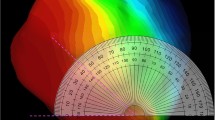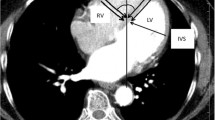Abstract
Background
Left bundle branch area pacing (LBBAP) is a novel therapeutic option for bradycardia and heart failure patients. ECG belt is a novel technology for assessment of ventricular electrical heterogeneity (VEH) using multi-electrode ECG. A metric of overall VEH based on standard deviation of activation times (SDAT) from all electrodes in the ECG belt has been previously shown to predict cardiac resynchronization therapy (CRT) response. The aim of the study is to evaluate non-invasive assessment of VEH using ECG belt to optimize LBBAP.
Methods
VEH from a 40-electrode ECG belt was characterized in 20 patients (male 15, EF 33 ± 13%, NYHA class 3.05 ± 0.6; CRT indication 18) during LBBAP (20) and LBBAP-Optimized CRT (LOT-CRT-7), anodal capture (16), NS-LBBP (18), S-LBBP (5), LVSP (9). In addition to SDAT, regional (LV/RV) VEH was assessed with average left ventricular activation times (LVAT), SDAT of left-sided (LV dispersion) and right-sided (RV dispersion) electrodes. Optimal LBBAP was determined based on maximal SDAT and QRS duration (d) change.
Results
All metrics were significantly reduced (p < 0.0001 for ECG belt metrics, p = 0.0027 for QRSd) during LBBAP and LOT-CRT compared to intrinsic. QRSd, SDAT, LVAT, and LV and RV dispersion during optimal LBBAP were significantly lower (133 ± 20/157 ± 24; 20.5 ± 7.5/38.6 ± 9; 44.4 ± 14.3/61.4 ± 21; 11.6 ± 11.6/29.5 ± 15; 21.1 ± 7.8/42.5 ± 9.3; p < 0.0001) compared to intrinsic rhythm. However, they were not significantly different among selective, non-selective, anodal, and LV septal captures. EF and NYHA class improved to 46 ± 11% and 1.9 ± 0.6 (p < 0.001).
Conclusions
LBBAP significantly reduced overall and regional (RV/LV) VEH, irrespective of the mechanism of capture. Detailed assessment of electrical heterogeneity using ECG belt may add valuable insights on effects of LBBAP.
Trial registration
ClinicalTrials.gov Identifier: NCT04583709.






Similar content being viewed by others
Abbreviations
- CRT:
-
Cardiac resynchronization therapy
- HBP:
-
His Bundle Pacing
- LBBAP:
-
Left bundle branch area pacing
- LBBB:
-
Left bundle branch block
- LVAT:
-
Left ventricular activation time
- SDAT:
-
Standard deviation of activation times
References
Cleland JG, Daubert JC, Erdmann E, Freemantle N, Gras D, Kappenberger L, Tavazzi L. The effect of cardiac resynchronization on morbidity and mortality in heart failure. N Engl J Med. 2005;352:1539–49.
Singh JP, Klein HU, Huang DT, et al. Left ventricular lead position and clinical outcome in the multicenter automatic defibrillator implantation trial-cardiac resynchronization therapy (MADIT-CRT) trial. Circulation. 2011;123:1159–66.
Epstein AE, DiMarco JP, Ellenbogen KA, et al. 2012 ACCF/AHA/HRS focused update incorporated into the ACCF/AHA/HRS 2008 guidelines for device-based therapy of cardiac rhythm abnormalities: a report of the American College of Cardiology Foundation/American Heart Association Task Force on Practice Guidelines and the Heart Rhythm Society. J Am Coll Cardiolol. 2013;61:e6-75.
Gage RM, Curtin AE, Burns KV, Ghosh S, Gillberg JM, Bank AJ. Changes in electrical dyssynchrony by body surface mapping predict left ventricular remodeling in patients with cardiac resynchronization therapy. Heart Rhythm. 2017;14(3):392–9. https://doi.org/10.1016/j.hrthm.2016.11.019.
Johnson WB, Vatterott PJ, Peterson MA, Bagwe S, Underwood RD, Bank AJ, Gage RM, Ramza B, Foreman BW, Splett V, Haddad T, Gillberg JM, Ghosh S. Body surface mapping using an ECG belt to characterize electrical heterogeneity for different left ventricular pacing sites during cardiac resynchronization: relationship with acute hemodynamic improvement. Heart Rhythm. 2017;14(3):385–91. https://doi.org/10.1016/j.hrthm.2016.11.017.
Huang W, Wu S, Vijayaraman P, Su L, Chen X, Cai B, Zou J, Lan R, Fu G, Mao G, Ellenbogen KA, Whinnett ZI, Tung R. Cardiac resynchronization therapy in patients with nonischemic cardiomyopathy using left bundle branch pacing. JACC Clin Electrophysiol. 2020;6(7):849–58. https://doi.org/10.1016/j.jacep.2020.04.011.
Vijayaraman P, Ponnusamy S, Cano Ó, Sharma PS, Naperkowski A, Subsposh FA, Moskal P, Bednarek A, Dal Forno AR, Young W, Nanda S, Beer D, Herweg B, Jastrzebski M. Left bundle branch area pacing for cardiac resynchronization therapy: results from the International LBBAP Collaborative Study Group. JACC Clin Electrophysiol. 2021;7(2):135–47. https://doi.org/10.1016/j.jacep.2020.08.015.
Jastrzębski M, Moskal P, Huybrechts W, Curila K, Sreekumar P, Rademakers LM, Ponnusamy SS, Herweg B, Sharma PS, Bednarek A, Rajzer M, Vijayaraman P. Left bundle branch-optimized cardiac resynchronization therapy (LOT-CRT): results from an international LBBAP collaborative study group. Heart Rhythm. 2022;19(1):13–21. https://doi.org/10.1016/j.hrthm.2021.07.057.
Bank AJ, Gage RM, Curtin AE, Burns KV, Gillberg JM, Ghosh S. Body surface activation mapping of electrical dyssynchrony in cardiac resynchronization therapy patients: potential for optimization. J Electrocardiol. 2018;51(3):534–41. https://doi.org/10.1016/j.jelectrocard.2017.12.004.
Salden FCWM, Luermans JGLM, Westra SW, Weijs B, Engels EB, Heckman LIB, Lamerichs LJM, Janssen MHG, Clerx KJH, Cornelussen R, Ghosh S, Prinzen FW, Vernooy K. Short-term hemodynamic and electrophysiological effects of cardiac resynchronization by left ventricular septal pacing. J Am Coll Cardiol. 2020;75(4):347–59. https://doi.org/10.1016/j.jacc.2019.11.040.
Funding
This study is supported by a grant from Medtronic External Research Program.
Author information
Authors and Affiliations
Corresponding author
Ethics declarations
Ethics approval
Approved by the Institutional Review Board.
Consent to participate
Informed consent (IRB approved) was obtained from each patient prior to performing ECG belt study.
Conflict of interest
PV: speaker, consultant, research, fellowship support—Medtronic; consultant—Abbott, Biotronik, Boston Scientific; Patent- HBP delivery tool. SG: employee, Medtronic. All other authors declare no competing interests.
Additional information
Publisher's note
Springer Nature remains neutral with regard to jurisdictional claims in published maps and institutional affiliations.
Springer Nature or its licensor holds exclusive rights to this article under a publishing agreement with the author(s) or other rightsholder(s); author self-archiving of the accepted manuscript version of this article is solely governed by the terms of such publishing agreement and applicable law.
Supplementary Information
Below is the link to the electronic supplementary material.
Rights and permissions
Springer Nature or its licensor holds exclusive rights to this article under a publishing agreement with the author(s) or other rightsholder(s); author self-archiving of the accepted manuscript version of this article is solely governed by the terms of such publishing agreement and applicable law.
About this article
Cite this article
Vijayaraman, P., Hughes, G., Manganiello, M. et al. Non-invasive assessment of ventricular electrical heterogeneity to optimize left bundle branch area pacing. J Interv Card Electrophysiol 66, 1103–1112 (2023). https://doi.org/10.1007/s10840-022-01315-9
Received:
Accepted:
Published:
Issue Date:
DOI: https://doi.org/10.1007/s10840-022-01315-9




